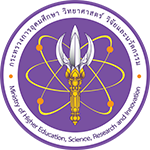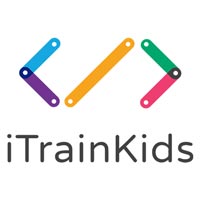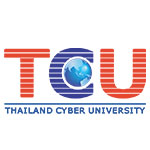Nov 26 | 2019
EdTech’s transformative power goes beyond just learning. It’s all about student wellbeing too.
Advances in technology are able to create better learning environments for pupils of all age groups.
Whether this is through providing them a platform to express themselves emotionally, or just giving them access to education, and other aspects of wellbeing, students in Asia are having their learning lives enhanced by tech.
While there are over 600m children of school age throughout Asia, not all of them have access to a quality education. Inequality is rife in Asia’s education sector.
Education is a right, so we start by asking how EdTech is improving student wellbeing by simply giving school-age children access to it in general?
Quality of teaching varies not just from country to country, but also from individual regions. Take Indonesia as an example. Its best teachers are attracted to institutes in big cities like Jakarta, which leaves depopulated areas like Papua and West Java struggling for resource.
Added to this is the fact Indonesia is an archipelago nation. 17,500 individual islands make up the country. Potentially millions of students could be left behind.
Remote learning solutions hold the key for reaching these would-be-learners. Domestic online platform Ruangguru is the market leader with 7m registered users.
It offers full curriculum across various levels, where students can be connected to teachers either via the Ruangguru website, or via the mobile app. This essentially puts those students struggling to find an educator in reach with 80,000 teachers working in Indonesia’s education sector.
Just giving students access to devices they are already familiar (iPads, laptops, smartphones, etc.) can prove very beneficial. Bring your own device (BYOD) schools let pupils bring their equipment to school, in a similar way that students would bring stationary with them in pre-digital eras.
This approach works to improve their learning, and thus wellbeing, by letting pupils learn using technologies they use every day. They are already familiar with their inner workings, so once they are given educational apps, they can learn at their own pace, in ways that suit their individual learning needs.
The Nagoya International School in Japan is one such institute taking a BYOD approach to learning. The school boasts WIFI access. And, according to the school’s website, promotes creativity, collaboration, and communication across the board.
No matter the level, students and pupils need to feel able to comfortably deal with their emotions. Education takes place during some interesting biological and psychological times for the human body, after all.
In Asia-Pacific, there is now a greater emphasis on ensuring mental health is given proper attention.
Stress and emotional uncertainty are particularly prevalent in international students in either schools or universities. Many find adjusting to an entirely new country a trying ordeal, which ultimately results in low education outcomes and potentially dropping out of full-time education altogether.
HappE is an app aimed at tackling uncertainty for international students which launched in 2017 in New Zealand.
Developed by Auckland tech company EESL, the app aims to acclimatise students to their new surroundings. This is not a one way-focussed app, however, as it also helps universities that use it better understand the emotional needs of their foreign charges.
HappE enables universities to distribute information directly to their students. They can collect information through surveys in order to monitor student wellbeing at all times. The overarching aim of the app is to improve the student experience for those studying in New Zealand.
Students are able to source information on their university and new city via the app, as well as contact the student services team with any issues.
The app works – much like an SOS signal through GPS – by gaining an immediate connection with the student’s network provider. This means that no matter where students are, they can access the app.
Are you an EdTech innovator? Bett Asia will help you reach a wide audience of over 2,600 government figures, teachers and education leaders, and more industry professionals in one of the most exciting and largest education technology markets in the world.
Enquire about your participation options today.
Whether this is through providing them a platform to express themselves emotionally, or just giving them access to education, and other aspects of wellbeing, students in Asia are having their learning lives enhanced by tech.
EdTech & Student wellbeing in Asian education
Plugging the gaps
While there are over 600m children of school age throughout Asia, not all of them have access to a quality education. Inequality is rife in Asia’s education sector.
Education is a right, so we start by asking how EdTech is improving student wellbeing by simply giving school-age children access to it in general?
Quality of teaching varies not just from country to country, but also from individual regions. Take Indonesia as an example. Its best teachers are attracted to institutes in big cities like Jakarta, which leaves depopulated areas like Papua and West Java struggling for resource.
Added to this is the fact Indonesia is an archipelago nation. 17,500 individual islands make up the country. Potentially millions of students could be left behind.
Remote learning solutions hold the key for reaching these would-be-learners. Domestic online platform Ruangguru is the market leader with 7m registered users.
It offers full curriculum across various levels, where students can be connected to teachers either via the Ruangguru website, or via the mobile app. This essentially puts those students struggling to find an educator in reach with 80,000 teachers working in Indonesia’s education sector.
Bring your own devices
Just giving students access to devices they are already familiar (iPads, laptops, smartphones, etc.) can prove very beneficial. Bring your own device (BYOD) schools let pupils bring their equipment to school, in a similar way that students would bring stationary with them in pre-digital eras.
This approach works to improve their learning, and thus wellbeing, by letting pupils learn using technologies they use every day. They are already familiar with their inner workings, so once they are given educational apps, they can learn at their own pace, in ways that suit their individual learning needs.
The Nagoya International School in Japan is one such institute taking a BYOD approach to learning. The school boasts WIFI access. And, according to the school’s website, promotes creativity, collaboration, and communication across the board.
Mental health support
No matter the level, students and pupils need to feel able to comfortably deal with their emotions. Education takes place during some interesting biological and psychological times for the human body, after all.
In Asia-Pacific, there is now a greater emphasis on ensuring mental health is given proper attention.
Stress and emotional uncertainty are particularly prevalent in international students in either schools or universities. Many find adjusting to an entirely new country a trying ordeal, which ultimately results in low education outcomes and potentially dropping out of full-time education altogether.
HappE is an app aimed at tackling uncertainty for international students which launched in 2017 in New Zealand.
Developed by Auckland tech company EESL, the app aims to acclimatise students to their new surroundings. This is not a one way-focussed app, however, as it also helps universities that use it better understand the emotional needs of their foreign charges.
HappE enables universities to distribute information directly to their students. They can collect information through surveys in order to monitor student wellbeing at all times. The overarching aim of the app is to improve the student experience for those studying in New Zealand.
Students are able to source information on their university and new city via the app, as well as contact the student services team with any issues.
The app works – much like an SOS signal through GPS – by gaining an immediate connection with the student’s network provider. This means that no matter where students are, they can access the app.
Bett Asia: Where EdTech calls home
Are you an EdTech innovator? Bett Asia will help you reach a wide audience of over 2,600 government figures, teachers and education leaders, and more industry professionals in one of the most exciting and largest education technology markets in the world.
Enquire about your participation options today.

.png?width=423&height=100&ext=.png)





.png?ext=.png)




















